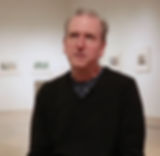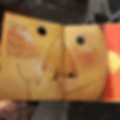This September: Variations
- lindsey4824
- Sep 3, 2025
- 8 min read

“If there is one ‘constant’ in the structure and theme of the wonder tale, it is transformation.” – Jack Zipes
Fairy tales and folktales are both a reflection of individual cultures, countries, and eras, as well as a bridge between them. Having been shared orally long before they were ever written down, variation is intrinsic to their form and purpose.
In September we’ll explore children’s book creators who have created some beloved variations of fairy tales and folktales including Eugene Trivizas, Helen Oxenbury, Jon Scieszka, Lane Smith, David Wiesner, and David Shannon.
Join us this month for Story Hours (ages 3-7) and our adults-only Let’s Take a Dive program to learn more about these creators and celebrate their inspiring work.
Eugene Trivizas (1946- ) & Helen Oxenbury (1938- )

The Three Little Wolves and the Big Bad Pig written by Eugene Trivizas and illustrated by Helen Oxenbury flips the classic tale in numerous ways. Published in 1993, the book’s modern details are equal parts subversive and humorous, like a brutalist wolf house made of concrete surrounded by barbed wire and a relentless pig with a pneumatic drill. And the moral of the story? Barriers are not the solution to a problem, but the cause of it. The Economist wrote “only the most talented of writers can tamper with a classic nursery tale and produce something almost as amusing and thought-provoking as the original.“
In addition to being one of Greece’s best-known writers for children, Eugene Trivizas is a sociology professor, law academic, and doctor of criminology. Born in Athens, Greece, Trivizas has lived and taught in England since 1978 at the University of Reading. He has done extensive research on the behavior of crowds, as well as the theory of general deterrence. He has written more than 120 children’s books and received numerous awards including the Greek State Literary Award (the nation’s highest literary honor) and was a finalist for the Hans Christian Anderson Award. The Three Little Wolves and the Big Bad Pig was the first book he published in English.
Image from The Three Little Wolves and the Big Bad Pig and The Rabbit hOle's exhibit for the book.
Helen Oxenbury is a British author and illustrator of children’s books. Oxenbury always loved to draw, and it provided a welcome diversion when childhood asthma and the German aerial attacks during WWII kept her confined. She attended the Central School of Art and Design in London for her university studies. At university, Oxenbury met her future husband, fellow children’s book creator John Burningham. After graduating, she entered the theater, film and TV industries, working as a set designer.
“It is impossible to be too much on the side of the child.” – Helen Oxenbury
Oxenbury’s first children’s book was Numbers of Things, a story about counting that she wrote and illustrated in 1967. In the late ‘80s, she published an instantly classic series of board books for babies, about babies, with titles including All Fall Down, Clap Hands, Tickle Tickle, and Say Goodnight. Oxenbury has produced dozens of titles throughout her career, both written and illustrated, but is perhaps best known for her illustrations of Michael Rosen’s 1989 book, We’re Going on a Bear Hunt.
Jon Scieszka (1954- ) & Lane Smith (1959- )

When it comes to humor in picture books, there are few greater collaborations than author Jon Scieszka and illustrator Lane Smith. After being introduced by their respective wives in the late 1980s, Scieszka and Smith compared notes on their many children’s book rejections. But when they fused their eclectic, satirical, and what some might just call weird proclivities, two wrongs published some books.
Beginning with The True Story of the Three Little Pigs and The Stinky Cheese Man and Other Fairly Stupid Tales they not only parodied familiar stories, but also books themselves with punchlines hidden everywhere from the title page to the ISBN number on the back. So far they have created eight picture books together, and collaborated on the middle grade series The Time Warp Trio.
Lane Smith was born in Oklahoma and grew up in Corona, California. He attributes his use of texture in his illustrations to growing up around the cracking paint and weathered surfaces of the antiques that his mother collected and sold. Smith studied art at the Art Center College of Design in Pasadena, California, paying his way through school by working as a janitor at Disneyland. After graduating, he was a freelance illustrator for many major publications, including The New York Times, Rolling Stone, TIME, The Atlantic, and more. Smith won Caldecott Honors for The Stinky Cheese Man and Grandpa Green, and was given lifetime achievement awards from the Carle Museum of Picture Book Art and the Society of Illustrators.
Jon Scieszka was born and raised in Flint, Michigan. As he chronicles in Knucklehead, he was one of six boys whose numerous misadventures lead to his creative, albeit at times twisted, sense of humor. He studied both Science and English at Albion College in Albion, Michigan, and later earned an MFA in Fiction from Columbia University in New York. While writing and painting apartments Jon decided to apply for a job at a New York City elementary school. Teaching a variety of grades and subjects over the course of a decade, made Scieszka realize he wanted to write for children.
Scieszka has created more than 70 books and is one of the most impactful 21st century advocates for getting young people excited about becoming lifelong readers. The Library of Congress appointed him as the first U.S. National Ambassador for Young People’s Literature in 2008. He also founded the literary program “Guys Read,” which celebrates reading as an engaging and legitimate pastime for young men and boys. Scieszka has been a major advocate for The Rabbit hOle since its inception and his work within the publishing industry was key to helping the museum secure rights and permissions to many featured books.
Scieszka and Smith’s books demonstrate a unique balance of sophistication and absurdity within familiar narrative frameworks, creating new opportunities for their books to reach broader audiences. Their decades-long creative partnership has resulted in surprising classics which look and read in completely fresh ways. The wildly popular reception of The Stinky Cheese Man spurred a major revolution in children’s literature in the 90s, influencing the way authors revisited classic tales by exhibiting the reach that humorous books can have on a wide range of readers.
David Wiesner (1956- )

In David Wiesner’s retelling of The Three Little Pigs, the wolf huffs and puffs so hard that he catapults the first pig out of the picture, and into an alternate, more three-dimensional reality. As all three pigs escape the storybook (and the wolf) into a blank white periphery that allows them to enter other stories, Wiesner plays with various styles and eras of children’s book illustrations as well as the form of the book.
Wiesner grew up in suburban New Jersey, where his imagination transformed his home and neighborhood into faraway planets, prehistoric jungles, and more.The biography on the website for his book Flotsam states, “When the everyday play stopped, he would follow his imaginary playmates into the pages of books, wandering among dinosaurs in the World Book Encyclopedia.”
In addition to the World Book Encyclopedia, Wiesner was influenced by comic books, silent films, and sci-fi movies.
Determined to be an artist, he studied illustration at the Rhode Island School of Design, where exploring his passion for wordless storytelling led him to picture books.
His first book was Honest Andrew (1980), a picture book he illustrated with text by Gloria Skurzynski. That same year he illustrated the novel Man From the Sky by Avi. After illustrating numerous books with other writers, he and his wife Kim Kahng co-wrote Loathsome Dragon in 1987. Since then he has primarily illustrated and written – though he is perhaps most well known for his wordless picture books.
In addition to incredibly detailed and expressive characters, playing with scale, a wry use of perspective, and humor are hallmarks of Wiesner’s style.
His fascination with flying objects, whether they are frogs, cabbages, or pigs on a paper airplane create surprising tableaus for readers to enter and wonder.
With his illustrations it is easy to imagine there is more beyond the boundaries of the page. Characters shift in and out the form of the page and book to investigate clever ways of storytelling.
Wiesner has the rare distinction of having won three Caldecott Medals for solo picture books—Tuesday (1991), The Three Pigs (2001), and Flotsam (2006).
At The Rabbit hOle, frogs from Tuesday float about the second floor. Wiesner will often spend more than a year working on a book, but the idea for Tuesday came quickly once he realized that a frog on a lilypad resembled a flying saucer.

Talking about his fascination with aliens in a Horn Book interview he said, “I like the idea that they’ve been visiting Earth. One thing is for sure, though: when they do reveal themselves, they’d better be in saucer-shaped ships. Whether the saucer is an efficient shape for space travel is irrelevant. They’ve been monitoring our media for years, and they know perfectly well what our expectations are. It will be an unbearable letdown if they show up in a tube or a cone or a sphere. We want saucers.”
David Shannon (1959- )

Though The Rabbit hOle has an exhibit dedicated to No, David! (which itself has spawned its own variations and series), Shannon has also illustrated a number of wonder tales including The Bunyans written by Audrey Wood, The Rough-Face Girl written by Rafe Martin, and Jangles: A Big Fish Story.
To write The Bunyans, Audrey Wood read every version of the Paul Bunyan tales she could find, including many that referenced a giant family. The resulting book imagines how the Bunyan family reshapes the North American landscape just by going through their everyday lives. Rafe Martin’s The Rough-Face Girl has its origins in Algonquin Indian folklore and is a powerful Cinderella-like tale.
Born in Washington D.C. and raised in Spokane, Washington, Shannon was always interested in pursuing a career in the arts. He graduated from the Art Center College of Design in Pasadena, California, with a degree in fine arts illustration.
Before starting his children’s book career in the late 80s, Shannon produced extensive work for magazines and periodicals, including The New York Times, Book Review, Time, and Rolling Stone.

The first book Shannon illustrated was How Many Spots Does a Leopard Have?, written by Julius Lester — author of Sam and the Tigers, which is also featured at The Rabbit hOle. Shannon’s identifiable use of color and line combined with a mischievous narrative voice creates an immediate appeal for readers, new and old.
He is perhaps best known for his series No, David!, which is a semi-autobiographical account of a naughty young boy who is constantly being told “No” for misbehaving. Published in 1998 as Shannon’s second solo authored/illustrated book, No, David! won a Caldecott Honor the following year. Shannon’s escapades have continued in several additional books, including most recently That’s Not Funny, David (2025).
So far Shannon has created more than 40 books for children. In many of them he has hidden an illustration of his dog Fergus. Have you found Fergus at The Rabbit hOle?






